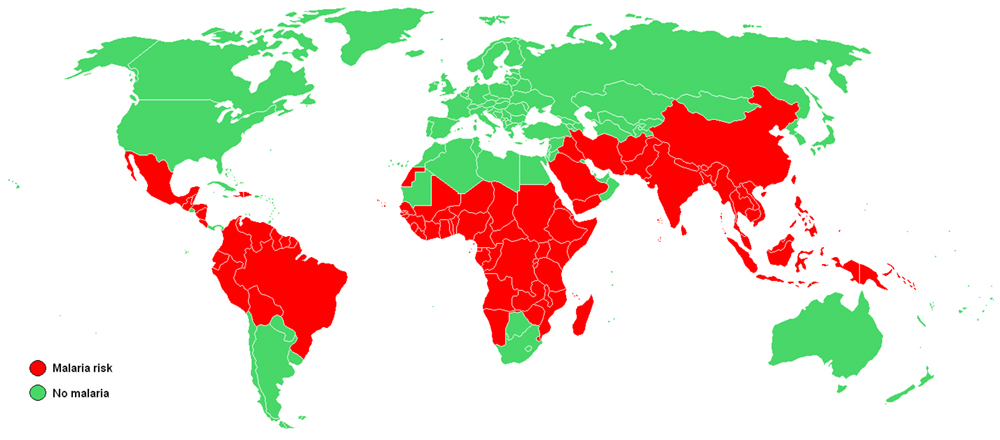| << Chapter < Page | Chapter >> Page > |

WHO, which is the health arm of the United Nations, set eight Millennium Development Goals (MDGs) in 2000 with the aim of reaching these goals by 2015. Some of the goals deal more broadly with the socioeconomic factors that influence health, but MDGs 4, 5, and 6 all relate specifically to large-scale health concerns, the likes of which most people in the United States will never contemplate. MDG 4 is to reduce child mortality, MDG 5 aims to improve maternal health, and MDG 6 strives to combat HIV/AIDS, malaria, and other diseases. The goals may not seem particularly dramatic, but the numbers behind them show how serious they are.
For MDG 4, the WHO reports that 2009 infant mortality rates in “children under 5 years old in the WHO African Region (127 per 1000 live births) and in low-income countries (117 per 1000 live births) [had dropped], but they were still higher than the 1990 global level of 89 per 1000 live births” (World Health Organization 2011). The fact that these deaths could have been avoided through appropriate medicine and clean drinking water shows the importance of healthcare.
Much progress has been made on MDG 5, with maternal deaths decreasing by 34 percent. However, almost all maternal deaths occurred in developing countries, with the African region still experiencing high numbers (World Health Organization 2011).
On MDG 6, the WHO is seeing some decreases in per capita incidence rates of malaria, tuberculosis, HIV/AIDS, and other diseases. However, the decreases are often offset by population increases (World Health Organization 2011). Again, the lowest-income countries, especially in the African region, experience the worst problems with disease. An important component of disease prevention and control is epidemiology , or the study of the incidence, distribution, and possible control of diseases. Fear of Ebola contamination, primarily in Western Africa but also to a smaller degree in the United States, became national news in the summer and fall of 2014.
There are broad, structural differences among the healthcare systems of different countries. In core nations, those differences include publicly funded healthcare, privately funded healthcare, and combinations of both. In peripheral and semi-peripheral countries, a lack of basic healthcare administration can be the defining feature of the system.
What do you think are the best and worst parts of the PPACA? Why?
Compare and contrast the healthcare system of the United States with the WHO’s Millennium Development Goals.
Project Mosquito Net says that mosquito nets sprayed with insecticide can reduce childhood malaria deaths by half. Read more at (External Link)
Anders, George. 1996. Health Against Wealth: HMOs and the Breakdown of Medical Trust . Boston: Houghton Mifflin.
Centers for Disease Control and Prevention. 2014 "Attention Deficit/Hyperactivity Disorder (ADHD) Data and Statistics." Retrieved October 13, 2014 ( (External Link) )
Docteur, Elizabeth, and Robert A. Berenson. 2009. “How Does the Quality of U.S. Health Care Compare Internationally?” Timely Analysis of Immediate Health Policy Issues 9:1–14.
Kaiser Family Foundation. 2011. “Health Coverage of Children: The Role of Medicaid and CHIP.” Retrieved December 13, 2011 ( (External Link) ).
Kaiser Family Foundation. 2010. “International Health Systems: Canada.” Retrieved December 14, 2011 ( (External Link) ).
Klein, Ezra. 2009. “Health Reform for Beginners: The Difference between Socialized Medicine, Single-Payer Health Care, and What We'll Be Getting.” The Washington Post , December 14. Retrieved December 15, 2011 ( (External Link) ).
Kogan, Richard. 2011. “Program Cuts Under a Balanced Budget Amendment: How Severe Might They Be?” Center on Budget and Policy Priorities. Retrieved December 15, 2011 ( (External Link)&id=3619 ).
Pear, Robert. 2011. “In Cuts to Health Programs, Experts See Difficult Task in Protecting Patients.” The New York Times , September 20. Retrieved December 13, 2011 ( (External Link) ).
Schoen, C., M.M. Doty, R.H. Robertson, and S.R. Collins. 2011. "Affordable Care Act Reforms Could Reduce the Number of Underinsured U.S. Adults by 70 Percent." Health Affairs 30(9):1762–71. Retrieved December 13, 2011 ( (External Link) ).
Uchiyma, T., M. Kurosawa, Y. Inaba. 2007. "MMR-Vaccine and Regression in Autism Spectrum Disorders: Negative Results Presented from Japan." Journal of Autism and Deviant Disorders 37(2):210–7.
U.S. Census. 2011. “Coverage by Type of Health Insurance: 2009 and 2010.” U.S. Census Bureau, Current Population Survey, 2010 and 2011 Annual Social and Economic Supplements. Retrieved December 13, 2011 ( (External Link) ).
U.S. Census. 2011. “CPS Health Insurance Definitions.” Retrieved December 13, 2011 ( (External Link) ).
Washington University Center for Health Policy. n.d. “Health Care Access for Medicaid Patients—Physicians and Dentists Interview Study.” Retrieved December 15, 2011 ( (External Link) ).
World Health Organization. 2011. “World Health Statistics 2011.” Retrieved December 12, 2011 ( (External Link) ).
World Health Organization. 2014. "Ebola Virus Disease Fact Sheet, Updated September 2014." Retrieved October 19, 2014 ( (External Link) ).

Notification Switch
Would you like to follow the 'Introduction to sociology 2e' conversation and receive update notifications?